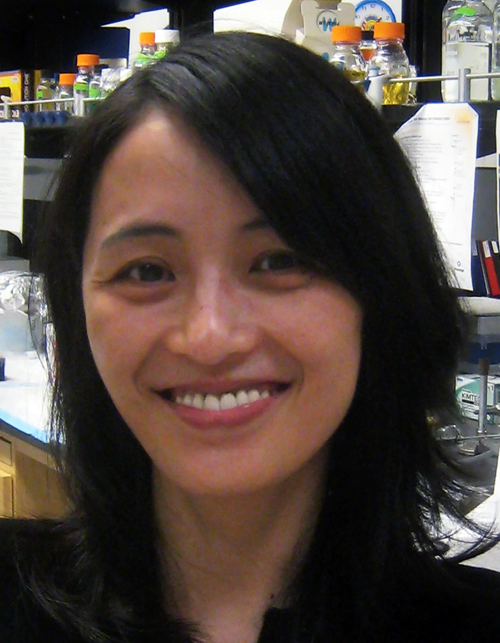Shan honored for work uncovering mechanisms of signal recognition particle
The American Society for Biochemistry and Molecular Biology has named Shu-ou Shan of the California Institute of Technology the winner of the society’s Young Investigator Award for 2013.

“It is a great honor to receive the ASBMB Young Investigator Award. I stand on the shoulders of many who came before me — great cell biologists like Peter Walter, who discovered this fundamental cellular pathway, and enzymologists like Daniel Herschlag, who defined rigorous conceptual frameworks for understanding biomolecular action. It is truly an honor to be mentored by these great scientists and hence have the opportunity to combine these disciplines.”
Shan has led extensive research concerning the specific protein-targeting mechanisms of the signal recognition particle, or SRP, the protein-RNA complex responsible for guiding polypeptide chains from the ribosome to the eukaryotic endoplasmic reticulum or the bacterial plasma membrane during protein biosynthesis. Her quantitative dissection of the kinetics of this complex mechanism established that the overall fidelity of the targeting process — the ability to make sure the right polypeptide is delivered to the proper cellular location — is achieved through the cumulative effects of discrimination at multiple kinetic steps, rather than only at the initial step as had been believed widely.
Shan’s research is of clinical significance, as it offers a better understanding of diseases that result from a defective pathway of protein delivery to the endoplasmic reticulum. Furthermore, it could aid in the development of new antibiotics that target bacterial SRP, thereby obtaining a bactericidal effect and an alternative for treating drug-resistant bacteria. Most fundamentally, it provides an elegant example of and roadmap for the dissection of complex biological processes, the need for which will continue to grow as we learn more about biological pathways and the control of and connections between these pathways.
Upon obtaining her Ph.D. at Stanford University in 2000, Shan joined the University of California, San Francisco, for postdoctoral research. It is there that she began her work on the SRP. She joined the California Institute of Technology in 2005.
Caltech colleague Douglas Rees describes Shan as “an exceptional scientist, dedicated mentor and a wonderful colleague.”
In his nomination of Shan for the award, Rees lauded Shan’s “ambitious and innovative research program and her uncanny ability to take a system from a cartoon level of understanding and placing it on a rigorous and quantitative mechanistic foundation.”
Rees continued: “Shu-ou’s impressive mentoring qualities clearly reflect the influence of her graduate adviser, Dr. Daniel Herschlag, who was recognized for his training of younger scientists by receiving the 2010 ASBMB William C. Rose Award.”
Shan got off to a quick start in graduate school, publishing three papers in her second year, all in prestigious journals, said Herschlag, now at the Stanford University Medical Center, who described Shan as “a very special and extremely creative scientist.”
“It has been remarkable to watch Shu-ou’s career develop as a postdoc with Peter Walter, where her understanding of biology grew immensely, and then as head of her own lab, where she has found and pursued important biological problems and have, in absolutely beautiful studies, applied rigorous kinetics and thermodynamics to reveal elegant mechanisms underlying the biology.”
Enjoy reading ASBMB Today?
Become a member to receive the print edition four times a year and the digital edition monthly.
Learn moreGet the latest from ASBMB Today
Enter your email address, and we’ll send you a weekly email with recent articles, interviews and more.
Latest in People
People highlights or most popular articles

Mydy named Purdue assistant professor
Her lab will focus on protein structure and function, enzyme mechanisms and plant natural product biosynthesis, working to characterize and engineer plant natural products for therapeutic and agricultural applications.

In memoriam: Michael J. Chamberlin
He discovered RNA polymerase and was an ASBMB member for nearly 60 years.

Building the blueprint to block HIV
Wesley Sundquist will present his work on the HIV capsid and revolutionary drug, Lenacapavir, at the ASBMB Annual Meeting, March 7–10, in Maryland.

In memoriam: Alan G. Goodridge
He made pioneering discoveries on lipid metabolism and was an ASBMB member since 1971.

Alrubaye wins research and teaching awards
He was honored at the NACTA 2025 conference for the Educator Award and at the U of A State and National Awards reception for the Faculty Gold Medal.

Designing life’s building blocks with AI
Tanja Kortemme, a professor at the University of California, San Francisco, will discuss her research using computational biology to engineer proteins at the 2026 ASBMB Annual Meeting.

